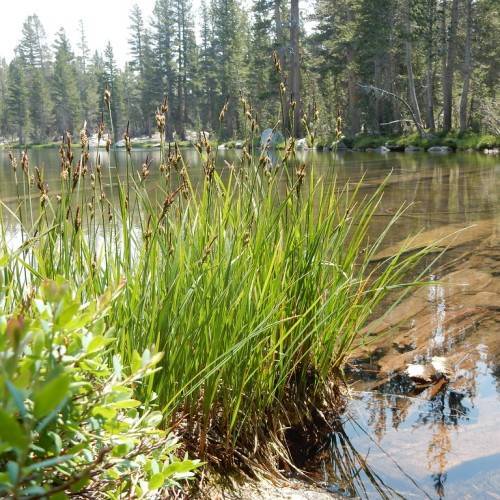
Holm's Rocky Mountain Sedge
Carex scopulorum var. bracteosa
Also Known As - Mountain SedgeWatering:
Minimal
Hardiness Zone:
Sun:
full sun,part shade
Leaf:
Yes
Growth Rate:
Low
Drought Tolerant:
Yes
Salt Tolerant:
Yes
Invasive:
Yes
Care Level:
Medium
watering
When watering Sedge (Carex scoparia x) it is important to follow a regular watering schedule. Water deeply but infrequently, preferably every 7-10 days depending on the weather. Make sure the soil is damp enough that water runs freely through the soil. Do not water overly as this can lead to root rot. If the soil dries out faster than usual, check to see if it is because the plant is not getting enough sun or air circulation. Making sure to water your Sedge plants out of the direct sun and early in the morning is also important. Avoid giving Sedge plants more than 1-2 inches of water per week. This will help to ensure the sediment stays moist, but not overly saturated.
sunlight
Sedge (Carex scoparia x) is a species of semi-aquatic plant that prefers full sunlight for optimal growth. This species should be provided with 6 to 8 hours of direct sunlight per day, preferably midday to mid-afternoon sunlight. Plant species located in particularly hot climates should be placed in areas that offer some light shade in the late afternoon. When growing Sedge indoors, place the plant near a south facing window and rotate it occasionally to ensure even sunlight exposure.
pruning
Pruning for sedge (Carex scoparia x) should be done in late winter, after the ground has completely thawed and the new growth has begun. Prune lightly, removing no more than 1-third of the total length of stems from the plant. Avoid removing more than 1-half of the leaf blades from each stem. This will help to ensure a healthy balance of foliage to root reserves. If existing stems have become too long or thin, cut them back to the base of the plant. Prune sedges to shape the plant or remove errant stems, and to keep them from becoming leggy. Be sure to disinfect your pruners or shears before and after use to prevent the spread of disease.
